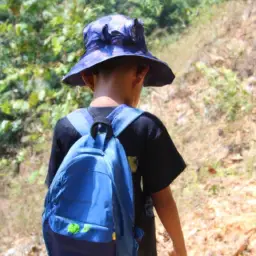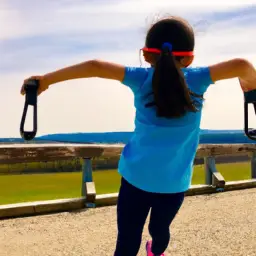Are you an educator or parent concerned about the academic success of at-risk students? Do you want to explore new ways to support these students and help them reach their full potential?
Consider grit-based interventions, which have shown promising results in improving academic performance and overall well-being of at-risk students.
Grit, defined as perseverance and passion for long-term goals, has been identified as a key trait for success in various fields, including education.
Grit-based interventions aim to cultivate this trait in students by providing them with opportunities to develop resilience, self-regulation, and growth mindset.
In this article, we will explore the challenges faced by at-risk students, the concept of grit-based intervention, its benefits, and practical tips for educators and parents to implement these interventions in their classrooms and homes.
Key Takeaways
- Grit-based interventions can improve academic performance and overall well-being of at-risk students.
- Effective teaching strategies for grit-based interventions include establishing a positive classroom environment, using active learning strategies, providing personalized feedback, and encouraging growth mindset.
- Goal-setting, self-reflection, and growth mindset are crucial for developing resilience and perseverance in at-risk students.
- Educators and parents can implement grit-based interventions in their classrooms and homes to support at-risk students and help them reach their full potential.
Understanding the Challenges Faced by At-Risk Students
At-risk students face a plethora of challenges, from poverty to lack of support, that can hinder their academic success. These challenges can be further exacerbated by the impact of socioeconomic status. Students from low-income families are more likely to face barriers such as inadequate housing, limited access to healthcare, and food insecurity. These challenges can have a significant impact on their academic performance and overall well-being.
Identifying risk factors is crucial to understanding the challenges faced by at-risk students. Risk factors can include a variety of issues such as family instability, academic struggles, and behavioral problems. These factors can increase the likelihood of students dropping out of school or engaging in risky behaviors.
By identifying these risk factors, educators and other professionals can develop targeted interventions that address the unique needs of at-risk students and help them achieve academic success.
What is Grit-Based Intervention?
If you’re looking to help at-risk students succeed in education, you may want to consider grit-based intervention.
Grit is defined as the perseverance and passion for long-term goals, and it can be taught through specific skills and strategies. These can include goal-setting, self-reflection, and developing a growth mindset.
Definition of Grit
Understanding the concept of grit is crucial for unlocking the potential of students facing challenges in their education. Grit is defined as a combination of perseverance and passion for long-term goals. It is the ability to stick to a task, even when it becomes difficult, and to continue striving towards achieving a larger objective.
Characteristics of gritty individuals include a sense of purpose and direction, an unwavering commitment to their goals, and the ability to bounce back from setbacks and failures. Gritty individuals are not deterred by obstacles and challenges; instead, they see them as opportunities for growth and development. They possess a growth mindset and believe that their abilities and talents can be developed through hard work and dedication.
By cultivating grit in at-risk students, educators can help them to develop the skills and mindset necessary to overcome adversity and achieve their goals.
Teaching Skills and Strategies
You can improve your ability to teach by utilizing effective skills and strategies. Grit-based interventions for at-risk students in education require specialized teaching methods that promote student engagement.
Here are four strategies you can use to improve your teaching skills:
-
Establish a positive classroom environment: Create a welcoming and safe classroom environment that encourages students to participate and share their ideas. Use positive reinforcement to boost student confidence and motivation.
-
Use active learning strategies: Instead of lecturing, use interactive and hands-on learning activities that encourage students to think critically and problem-solve. This method will increase student engagement and help students remember information better.
-
Provide personalized feedback: Give students personalized feedback on their performance, highlighting areas where they can improve. This shows that you care about their progress and want to help them succeed.
-
Encourage growth mindset: Teach students that intelligence and abilities can be developed through hard work and dedication. Encourage them to embrace challenges and see mistakes as opportunities for growth. This mindset will help them develop grit and persevere through difficult tasks.
Goal-Setting, Self-Reflection, and Growth Mindset
By setting goals, reflecting on your progress, and embracing a growth mindset, you can develop the resilience and perseverance needed to overcome challenges and achieve success.
Goal setting is a powerful tool for students who may be at risk of falling behind or giving up altogether. By setting specific, measurable, achievable, relevant, and time-bound goals, you can create a roadmap for your academic and personal growth. Your goals should be challenging but realistic, and you should break them down into smaller steps to make them more manageable.
Self-reflection is also crucial for growth and development. By regularly reflecting on your progress, you can identify what’s working well and what needs improvement. You can also adjust your goals and strategies accordingly.
Self-reflection can be challenging, but it’s an essential part of the growth process. Finally, an accountability partnership can help you stay on track and make progress towards your goals. By working with a mentor, coach, or peer, you can receive support, feedback, and encouragement as you navigate your educational journey.
Together, you can celebrate milestones and overcome obstacles, building the resilience and grit needed to achieve success.
Benefits of Grit-Based Interventions
You’ll be pleased to know that grit-based interventions can bring about a range of benefits for at-risk students.
Firstly, these interventions are associated with improved academic outcomes, which can lead to greater success in the long run.
Secondly, students who participate in grit-based interventions tend to exhibit increased resilience and perseverance in the face of adversity, which can be a valuable life skill.
Finally, grit-based interventions have the potential to enhance students’ self-confidence and self-efficacy, which can help them tackle challenges with greater confidence and determination.
Improved Academic Outcomes
When tackling academic challenges, it’s important to stay focused on your goals and develop a growth mindset. Grit-based interventions have been found to improve academic outcomes for students facing adversity. Here are some ways in which effective implementation of these interventions can help measure success:
-
Increased attendance: With a focus on perseverance and resilience, at-risk students are more likely to attend classes and complete their work.
-
Improved grades: By setting achievable goals and working towards them, students can see tangible improvements in their grades.
-
Higher graduation rates: When students have a growth mindset and are taught to persevere through challenges, they are more likely to graduate from high school and pursue post-secondary education.
-
Stronger sense of self-efficacy: Grit-based interventions help students develop a sense of self-efficacy, or the belief in their ability to overcome challenges and succeed academically.
-
Improved mental health: When students feel supported and encouraged to persevere through challenges, they are less likely to experience anxiety or depression related to their academic performance.
By implementing grit-based interventions in education, educators can measure success through these outcomes and help at-risk students achieve their academic goals.
Increased Resilience and Perseverance
You can boost your resilience and perseverance by developing a growth mindset and staying focused on your goals. Building resilience is all about learning to overcome obstacles and challenges. It’s about developing the ability to bounce back from setbacks and failures, and to keep pushing forward even when things get tough.
By adopting a growth mindset, you can start to see obstacles as opportunities for growth and learning, rather than as insurmountable roadblocks. This shift in perspective can help you to stay motivated and to keep striving towards your goals, even in the face of adversity.
Overcoming obstacles is an essential part of building resilience. When you encounter challenges, it’s important to stay focused on your goals and to keep moving forward, even when it feels difficult. By developing a sense of purpose and direction, you can stay motivated and inspired, even in the face of setbacks and failures.
By cultivating a growth mindset and staying committed to your goals, you can boost your resilience and perseverance, and achieve success in all areas of your life. So if you’re looking to build your resilience and overcome obstacles, start by adopting a growth mindset and staying focused on your goals.
Enhanced Self-Confidence and Self-Efficacy
Boosting your self-confidence and self-efficacy can lead to greater success and fulfillment in all areas of your life. When you believe in yourself and your abilities, you’re more likely to take on challenges and persevere through obstacles.
Building resilience is a key component of enhancing self-confidence and self-efficacy. By recognizing and overcoming past obstacles, you can gain a sense of accomplishment and develop a stronger belief in your ability to handle future challenges.
One way to enhance self-confidence and self-efficacy is through setting achievable goals and working towards them. Celebrating small victories along the way can help build momentum and increase belief in oneself.
It’s important to remember that setbacks and failures are a natural part of the learning process and should be viewed as opportunities for growth rather than signs of inadequacy. By taking on challenges and building resilience, you can enhance your self-confidence and self-efficacy, leading to greater success and fulfillment in all areas of your life.
Practical Tips for Educators
To effectively incorporate grit-based interventions into your lessons, it’s important to create a supportive classroom environment. This means providing a safe space for students to take risks and make mistakes, as well as offering emotional support and encouragement.
You can also integrate grit-based concepts into your lesson plans, such as emphasizing the importance of perseverance and effort. Don’t forget to provide regular feedback and praise to help your students build confidence in their abilities.
Creating a Supportive Classroom Environment
When creating a supportive classroom environment, it’s important to show empathy and understanding towards your students’ individual needs and challenges. As a teacher, you play a crucial role in shaping the classroom culture, and your actions can have a significant impact on your students’ well-being and academic success.
Here are a few practical tips to help you create a supportive classroom environment that fosters a sense of belonging and promotes positive student outcomes:
-
Get to know your students on a personal level: Take the time to learn about your students’ interests, hobbies, and family background. This can help you better understand their individual needs and challenges and build a stronger rapport with them.
-
Create a safe and inclusive learning space: Make sure your classroom is a safe and welcoming space where all students feel valued and respected. Encourage open communication and dialogue, and be mindful of your language and actions to avoid unintentionally excluding or marginalizing any students.
-
Provide opportunities for student voice and choice: Empower your students by giving them opportunities to make decisions and take ownership of their learning. This can help them feel more invested in their education and foster a greater sense of autonomy and self-efficacy.
-
Offer teacher support and guidance: Be available to your students for academic and emotional support, and provide guidance and resources to help them overcome any obstacles they may face. Let them know that you’re there to help them succeed and that you believe in their potential.
By implementing these strategies, you can create a classroom environment that supports the academic and emotional growth of all your students and helps them develop the grit and resilience needed to succeed both in and out of the classroom.
Incorporating Grit-Based Interventions into Lesson Plans
Picture a classroom where students are challenged to persevere through difficult tasks and encouraged to develop a growth mindset, all while learning important academic content. This is the type of classroom that incorporates grit-based interventions into their lesson plans. These interventions focus on developing students’ perseverance and resilience, which are essential skills for success in both academics and life.
Lesson plan examples for grit-based interventions include activities that encourage students to set goals, reflect on their progress, and take ownership of their learning. For example, a teacher may ask students to set a goal for the week and then reflect on their progress at the end of the week. This type of activity not only promotes goal-setting and reflection but also helps students develop a growth mindset by recognizing that progress takes time and effort.
Other student engagement activities could include group projects that require collaboration, problem-solving, and communication skills. By incorporating grit-based interventions into lesson plans, teachers can create a supportive environment that fosters perseverance and resilience in their students.
Providing Feedback and Encouragement
Providing feedback and encouragement is crucial for promoting perseverance and resilience in the classroom, as students need support and recognition for their efforts. It’s important to consistently provide feedback, both positive and constructive, as it helps students understand their strengths and areas for improvement. This also helps them develop a growth mindset, where they see challenges as opportunities for growth rather than obstacles to overcome.
Additionally, peer support plays a significant role in promoting grit and resilience. Encouraging students to support each other and work collaboratively can create a positive classroom culture where students feel valued and motivated.
To effectively provide feedback and encouragement, it’s important to be specific and timely. When giving feedback, focus on the effort and progress rather than just the end result. Acknowledging the progress that students have made, no matter how small, can go a long way in promoting perseverance. It’s also important to provide feedback in a timely manner, so that students can reflect on their performance and make adjustments as needed.
Lastly, peer support can be fostered through activities such as group work, peer tutoring, and class discussions. By creating opportunities for students to work together and support each other, they can develop the skills and mindset needed to persevere through challenges.
Practical Tips for Parents
Parents can effectively support their at-risk children by implementing simple yet impactful grit-building strategies at home. One way to do this is by increasing parental involvement in their child’s education. This can be done by regularly communicating with their child’s teacher, attending parent-teacher conferences, and helping with homework.
By taking an active role in their child’s academic journey, parents can help cultivate a sense of responsibility and accountability in their child. This, in turn, can help develop their child’s grit and determination.
Another way parents can help build grit in their at-risk child is by fostering independence. By giving their child age-appropriate responsibilities, parents can help them develop a sense of self-reliance and perseverance. This can include simple tasks such as making their bed, doing their laundry, or preparing their own meals.
Additionally, parents can encourage their child to set goals and work towards achieving them. By providing a supportive environment where their child feels empowered to take charge of their own life, parents can help build their child’s resilience and determination.
By implementing these practical tips at home, parents can play a crucial role in helping their at-risk child develop the grit and determination needed to succeed in school and beyond.
Frequently Asked Questions
What other interventions are available for at-risk students besides grit-based interventions?
If you’re looking for alternative interventions for at-risk students, there are a few options that have shown positive impacts on academic performance.
For example, mentoring programs have been effective in providing students with a positive role model and additional support outside of the classroom.
Additionally, academic tutoring has been shown to improve grades and test scores for struggling students.
Another option is social-emotional learning programs, which focus on developing skills such as self-awareness and relationship building that can help students succeed academically and in life.
While grit-based interventions may be popular, it’s important to consider a range of options to best support at-risk students.
How long does it typically take for a student to develop grit through grit-based interventions?
Developing grit through grit-based interventions can vary in time depending on several factors. Some of these factors influencing grit development include the student’s current level of grit, their motivation to develop grit, and the effectiveness of the intervention.
It’s also important to note that measuring the effectiveness of grit interventions can be challenging, as grit is a complex trait that’s difficult to quantify. However, research suggests that grit interventions can be effective in improving academic outcomes and increasing resilience in at-risk students.
The length of time it takes for a student to develop grit through a grit-based intervention may vary, but consistent and sustained efforts over time can lead to positive changes in grit levels.
Are there any potential negative effects of using grit-based interventions with at-risk students?
When it comes to implementing grit-based interventions with at-risk students, it’s important to consider the potential drawbacks and ethical considerations that may arise.
While these interventions have been shown to improve academic performance and overall well-being, they may also place undue pressure on students to constantly strive for success, leading to burnout or feelings of inadequacy.
Additionally, there is a risk of reinforcing the idea that success is solely based on individual effort, rather than acknowledging systemic barriers that may prevent some students from achieving their goals.
It’s important to approach these interventions with sensitivity and a focus on holistic support, rather than using them as a quick fix solution.
How can educators ensure that grit-based interventions are implemented effectively and consistently across different classrooms and schools?
To ensure that grit-based interventions are implemented effectively and consistently across different classrooms and schools, it’s important for educators to undergo teacher training that focuses on these interventions. This training should include strategies for student engagement and motivation, as well as accountability measures to ensure that teachers are following through with the interventions.
It’s also important for educators to consistently monitor and assess the effectiveness of these interventions and make adjustments as needed. By prioritizing teacher training and accountability measures, and utilizing student engagement and motivation strategies, educators can effectively implement grit-based interventions and support at-risk students in achieving their academic goals.
Are there any specific populations of at-risk students that may benefit more or less from grit-based interventions?
If you’re wondering whether grit-based interventions are equally effective for all at-risk students, it’s important to consider the role of culture in these interventions. Different cultures may have varying views on what it means to persevere and overcome obstacles.
Additionally, the effectiveness of grit-based interventions may vary across different academic subjects. For example, students who struggle with math may require a different approach than those who struggle with reading.
It’s important for educators to consider the unique needs and backgrounds of their students when implementing grit-based interventions. Overall, while these interventions may be helpful for many at-risk students, it’s important to approach them with care and consideration for individual differences.
Conclusion
Congratulations! You’ve reached the end of this article on exploring grit-based interventions for at-risk students in education. By now, you have a better understanding of the challenges faced by at-risk students and how grit-based interventions can help them overcome obstacles and achieve their goals.
As an educator or parent, you have the power to make a difference in the lives of at-risk students by implementing practical tips and strategies for fostering grit. By encouraging perseverance, passion, and resilience, you can help these students develop the skills and mindset they need to succeed in school and beyond.
Remember, grit is not just about talent or intelligence but about the determination to keep going even when things get tough. So, keep pushing forward and never give up on your students.









































































































